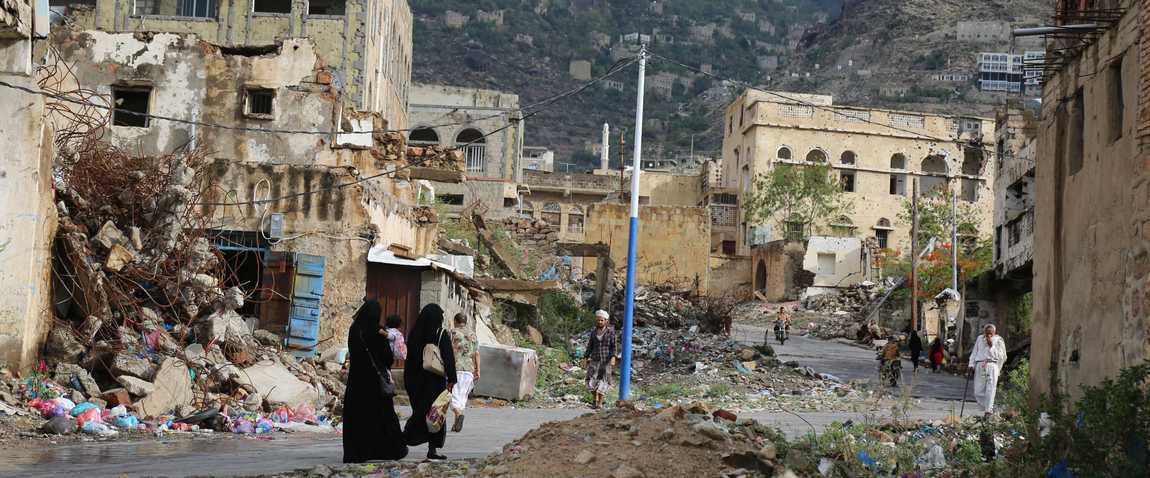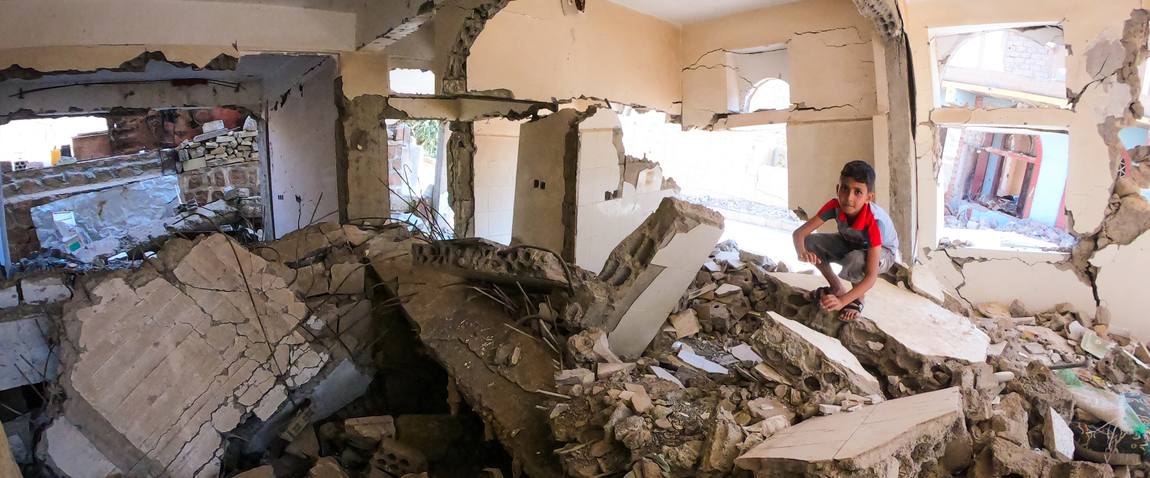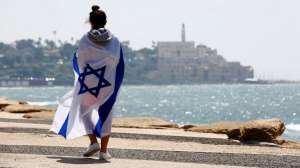Yemen lies at the southernmost edge of the Arabian Peninsula, bordered by Saudi Arabia to the north and Oman to the east, and surrounded by the vast Arabian and Red Seas. It is a land of dramatic contrasts — rugged mountains, timeless deserts, and turquoise coastlines — yet burdened by one of the most prolonged and devastating conflicts in modern times. Once a flourishing hub of ancient trade routes and Islamic scholarship, Yemen today remains gripped by war, poverty, and political instability.
Although Yemen’s people are renowned for their warmth, hospitality, and rich cultural identity, the country itself remains extremely unsafe for travelers. Ongoing violence, the risk of kidnapping, terrorism, and the near-collapse of infrastructure make it one of the world’s most dangerous destinations at the moment. As beautiful as Yemen’s landscapes and history are, every major government and travel authority strongly discourages visiting the country under current conditions.
Yemen Travel Advisory
Do not travel to Yemen under any circumstances due to terrorism, civil conflict, health emergencies, kidnapping, and the widespread presence of landmines. The situation remains volatile throughout the nation.
The civil war, which began in 2014, continues to divide the country between rival factions — including the Saudi-led coalition and Houthi forces supported by Iran. Sporadic bombings, airstrikes, and armed clashes occur across multiple regions, often hitting civilian areas such as markets, transportation hubs, and residential zones without warning. Militant organizations affiliated with Al-Qaeda and ISIS also operate within Yemen, planning attacks and kidnappings, particularly targeting foreigners and humanitarian workers.
Public services have collapsed in many cities. Hospitals and clinics operate with limited staff and medicine, and access to clean water, electricity, and sanitation remains severely restricted. In addition, Yemen faces one of the worst humanitarian crises in the world — millions lack adequate food, and cholera outbreaks continue to resurface periodically.
Foreign nationals, including dual citizens, face serious risks of detention or disappearance, particularly in regions controlled by non-state actors. Even the island of Socotra, once a symbol of tranquility, is currently off-limits for tourism despite misleading claims from some foreign operators offering unauthorized travel packages and unofficial visas. These illegal arrangements put travelers in serious danger.
10 Reasons Why You Should and Should Not Travel to Yemen Right Now
1. Dragon’s Blood Trees on Socotra Island

Socotra Island, located more than 350 kilometers off Yemen’s southern coast in the Arabian Sea, is one of the planet’s most extraordinary natural environments. It was once part of the prehistoric supercontinent Gondwana and separated millions of years ago, allowing its ecosystem to evolve in complete isolation. Today, nearly 40% of Socotra’s plant species and 90% of its reptiles are found nowhere else on Earth.
The island’s landscape feels otherworldly — dry plateaus covered with alien-shaped Dragon’s Blood Trees, bizarrely twisted frankincense shrubs, and hidden wadis that nurture small oases of life. The resin of the Dragon’s Blood Tree, once traded as medicine and dye since antiquity, gives the island its name. Socotra’s 40,000 residents, a mix of Somali, Yemeni, and Comorian heritage, live largely through fishing and small-scale agriculture. The island is recognized by UNESCO as a World Heritage Site, considered vital for global biodiversity.
Yet despite its ecological wonder, Socotra’s accessibility is now extremely restricted due to the conflict, and its political situation remains fragile. Many travel agencies mislead tourists into believing that visits are safe, but such trips often violate immigration laws and put visitors at severe risk.
2. Castles and Mountains of Taiz

Perched high in Yemen’s southwestern highlands, the city of Taiz is both breathtaking and heartbreaking. Once known as the cultural capital of Yemen, Taiz is set against the backdrop of the Jabal Sabr mountain range, soaring nearly 3,000 meters above sea level. The city’s medieval architecture, bustling souks, and centuries-old mosques once made it a center of Yemeni art, education, and trade.
The most prominent landmark is Cairo Castle, also known as Al-Qahira Fortress, which overlooks the city from a rocky hillside. Its ancient terraces, water basins carved into stone, and remnants of royal chambers reflect the grandeur of Yemen’s past dynasties. Nearby stands the Ashrafiya Mosque, a masterpiece of Islamic art built during the Rasulid dynasty around the 13th century.
Tragically, years of bombardment have left much of Taiz in ruins. Many of its historical treasures — including parts of Cairo Castle — have been damaged or destroyed. Despite the destruction, Taiz remains symbolic of Yemeni resilience and the enduring spirit of its people who continue to rebuild their lives amid hardship.
3. Beaches and Volcanic Landscapes of Aden

Aden, Yemen’s coastal gateway on the Gulf of Aden, was once among the busiest ports in the British Empire. Traces of that colonial heritage still linger in its architecture and landmarks — such as The Crescent Hotel, which famously hosted Queen Elizabeth II during her 1954 visit.
Today, Aden serves as the temporary administrative capital of Yemen, though it has also suffered greatly during the conflict. Despite the turmoil, its geography remains spectacular: a city built around the rim of an ancient volcano, offering panoramic views over natural harbors and vast stretches of sea.
Among its most visited landmarks are the Water Tanks of Al-Sahareej, believed to date back over a thousand years; the Sira Fortress, an ancient defensive citadel; and Shamsan Mountain, whose slopes once guarded the city’s port. Aden is also home to beautiful beaches such as Elephant Beach and Gold Mohur Beach, which in more peaceful times attracted visitors from across the region.
But for now, Aden’s charm lies dormant under the shadow of war — a city waiting for the day when safety and peace return to its shores.
4. Palaces and Islamic Heritage in Sanaa

Sanaa, Yemen’s capital and one of the world’s oldest continuously inhabited cities, is a living museum of Islamic architecture. The old city, recognized as a UNESCO World Heritage Site, is famed for its tall, multi-story mud-brick houses decorated with white gypsum patterns that glisten under the desert sun.
Among the city’s landmarks are the Great Mosque of Sanaa, believed to have been founded during the time of the Prophet Muhammad, and the Ghumdan Palace, a legendary ancient structure said to be one of Arabia’s first high-rise buildings. The bustling Salt Market (Souq al-Milh) offers a glimpse into everyday Yemeni life — where merchants sell spices, silverware, textiles, and traditional handicrafts.
Sanaa embodies Yemen’s deep cultural roots and artistry, yet it also reflects the country’s suffering. Airstrikes and clashes have scarred parts of this beautiful city, and preservation efforts remain an ongoing challenge. Still, its skyline of minarets and gingerbread houses continues to symbolize the endurance of Yemen’s identity.
5. Nature and Architecture in Hutayb

Hutayb is a small but enchanting town nestled in the Haraz Mountains of western Yemen, a region known for its spectacular terraced hillsides and ancient stone villages that seem to rise straight out of the cliffs. This area is not only admired for its breathtaking scenery but also for its deep cultural and spiritual significance. Historically, the Haraz region was a stronghold of the Sulayhi dynasty in the 11th century and remains an important site for the Ismaili Muslim community.
The town’s most prominent landmark, Al-Hutayb Mosque, sits majestically on a ridge overlooking mist-covered valleys. Its architecture reflects Yemen’s timeless tradition of combining simple geometric harmony with natural stonework. Surrounding the mosque are steep pathways leading to age-old homes and agricultural terraces where villagers still grow coffee, fruits, and grains, as their ancestors have done for centuries.
Despite its beauty, Hutayb has not escaped the reach of Yemen’s war. Travel routes are unsafe, and many of the once-thriving mountain communities have become isolated. Yet, in the rare calm moments, Hutayb still stands as a symbol of peace and perseverance—a glimpse of Yemen’s soul untouched by modern chaos.
6. The Civil War and Its Impact

Yemen’s civil war began in 2014, ignited by years of political instability following the Arab Spring movement of 2011. The uprising that ousted long-time ruler Ali Abdullah Saleh promised change but left behind division and power struggles. The Houthi movement, representing Yemen’s Zaidi Shia minority, seized control of the capital, Sanaa, in 2014, forcing President Abdrabbuh Mansour Hadi to flee.
What followed was a full-scale war as a Saudi-led coalition intervened in early 2015 to restore the internationally recognized government. Backed by Western allies, the coalition launched air campaigns targeting Houthi-held territories, while the Houthis, supported by Iran, entrenched themselves across northern Yemen.
Over the past decade, the war has devastated Yemen’s infrastructure and economy. Schools, hospitals, bridges, and factories have been reduced to rubble. Millions have been displaced, creating one of the world’s most severe humanitarian crises. The United Nations estimates that over 23 million Yemenis—more than two-thirds of the population—now depend on humanitarian aid to survive.
Even though peace talks have taken place sporadically, a lasting resolution remains elusive. What was once a conflict between two sides has fragmented into complex local rivalries, each backed by regional powers. The tragedy of Yemen’s civil war is not just in its destruction but in the way it has erased decades of progress and hope for an entire generation.
7. Crime and Kidnapping

The instability brought by war has created fertile ground for crime and lawlessness. Kidnapping—once a rare act used by tribal groups for negotiation—has now become a serious threat involving both criminal networks and extremist organizations. Foreigners, aid workers, and journalists have been targeted, often for ransom or political leverage.
Major governments, including the U.S., U.K., and European Union, have repeatedly warned their citizens against traveling to Yemen. The absence of functioning law enforcement and the collapse of the judiciary system mean that crimes often go unpunished. Roadside robberies and attacks have also increased, especially on routes between major cities like Sanaa, Taiz, and Aden.
Local communities, despite their traditional hospitality, struggle to maintain safety as poverty deepens and armed militias proliferate. For now, Yemen remains one of the most high-risk destinations in the world for both tourists and humanitarian personnel, and travel here is strongly discouraged under all circumstances.
8. Terrorism Threats

Yemen has long been a breeding ground for extremist movements, and the ongoing war has only strengthened their foothold. Al-Qaeda in the Arabian Peninsula (AQAP) and groups linked to the so-called Islamic State (ISIS) operate across several provinces, particularly in remote and mountainous regions. They frequently target government sites, airports, foreign organizations, and even places of worship.
These groups also engage in ambushes, bombings, and assassinations—often without warning. Civilians are frequently caught in crossfire, adding to the insecurity that already plagues the country. While the Yemeni government and coalition forces continue to fight against terrorism, the fragmented nature of the conflict makes it difficult to maintain consistent control over territory.
In recent years, both local and foreign intelligence services have thwarted several planned attacks targeting aviation and Western interests, yet the overall threat level remains “critical.” Simply put, traveling to Yemen today would mean exposing oneself to a constant risk of violence and abduction.
9. Health Risks

Yemen’s healthcare system, once modest but functional, has been crippled by years of conflict. Many hospitals have been destroyed or are operating without adequate supplies. Electricity shortages make refrigeration of medicines unreliable, and many doctors have fled the country due to insecurity.
Diseases that are preventable elsewhere—such as cholera, dengue fever, and malaria—spread easily due to contaminated water and poor sanitation. The cholera outbreak, which began in 2016, became one of the largest in recorded history, infecting millions. More recently, the COVID-19 pandemic exacerbated the crisis, overwhelming an already broken system.
Access to healthcare is nearly nonexistent in rural areas, where families must travel for hours, often through dangerous zones, to reach a clinic. Pregnant women and children face the highest mortality rates. Even basic vaccination campaigns struggle to reach remote communities because of damaged infrastructure and ongoing fighting.
For travelers, the combination of limited medical care, disease outbreaks, and lack of clean water makes Yemen unsafe from a health standpoint as well.
10. Landmines and Unexploded Ordnance

Landmines remain one of Yemen’s deadliest legacies of war. Both the Houthi rebels and coalition-aligned forces have laid thousands of mines across the countryside, beaches, and even urban neighborhoods. According to humanitarian organizations, hundreds of civilians—including children—are killed or maimed each year by unexploded ordnance.
These mines not only endanger lives but also block humanitarian aid and farming access. Vast areas of agricultural land, vital for food production, remain off-limits. Even regions once cleared are often re-mined as frontlines shift.
Efforts by international agencies to remove landmines are ongoing but slow, hampered by insecurity and lack of funding. Until Yemen achieves peace and demining efforts can be completed safely, travel within the country—especially outside major cities—will remain extremely dangerous.
Final Reflection
Yemen is a land of breathtaking natural beauty and cultural richness — from the coral islands of Socotra to the timeless streets of Sanaa. Its history runs deep through trade routes, poetry, and architecture that have shaped the Arabian Peninsula for millennia. Yet today, it is also one of the most fragile and dangerous places on earth.
While peace negotiations continue intermittently, Yemen remains a nation in distress — struggling against war, famine, and disease. For travelers, no amount of curiosity or adventure can outweigh the risks at this time. The country’s wonders deserve to be seen, but only when its people can once again live in safety and stability.
Until then, Yemen stands as a reminder of endurance amid tragedy, waiting for the day when it can once more welcome the world with open arms.
















